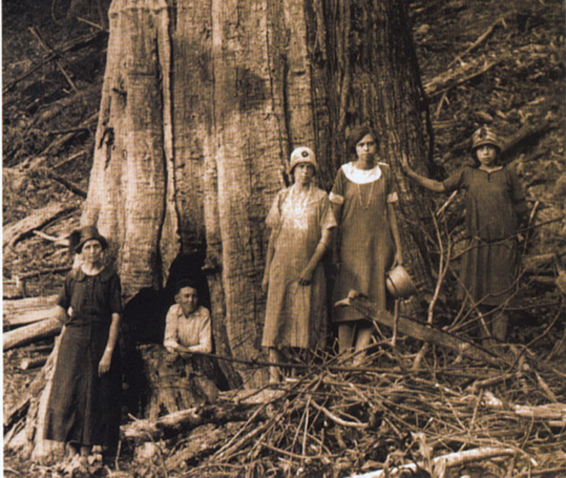
Recent plantings of the nearly extinct American chestnut tree–a beloved and once key species in the eastern U.S.–have thrived during their first growing season in national forests, according to partners involved in the restoration effort.
This milestone, jointly achieved by the U.S. Forest Service, The American Chestnut Foundation and the University of Tennessee, involved the test planting in 2008 of hundreds of blight-resistant American chestnut trees in three national forests in North Carolina, Tennessee and Virginia. In an effort to protect the seedlings, project partners are not disclosing the exact locations of the test plots.
“The American chestnut is important because it was once an integral part of the Appalachian culture providing food for wildlife and contributing to the diversity of the forest ecosystem,” said Roger Williams, director of Forest Management for the Southern Region of the U.S. Forest Service. “The successful plantings we are announcing today are another step in the effort to re-introduce this keystone species back into its native range.”
Once a dominant species, the American chestnut was virtually wiped out by an exotic fungus from Asia called the chestnut blight. During the last 26 years, The American Chestnut Foundation worked with partners to develop a blight-resistant American chestnut. Traditional backcross-breeding with the blight resistant Chinese chestnut produced a blight-resistant American chestnut that is 15/16th pure.
“Our partners at the U.S. Forest Service and University of Tennessee are monitoring blight resistance, growth and survival of the seedlings to determine whether the chestnut trees will survive and thrive in a real world setting,” said Bryan Burhans, president and chief executive officer of The American Chestnut Foundation.
The trees, now 4-6 feet tall and flowering, are doing well after only one year, according to Stacy Clark, a research forester with the U.S. Forest Service’s Southern Research Station. “These plantings are small, but represent the first scientific experiment using blight-resistant trees from the Foundation planted on Forest Service land,” said Clark, who establishes and monitors the test plantings. “Our results can be used to predict how blight-resistant American chestnuts will grow when restoration efforts become larger.”
This is “the beginning of restoring an old friend to eastern North American forests,” said Dr. Scott Schlarbaum, professor of forest genetics and Tree Improvement Program (TIP) Director at the University of Tennessee.
In 2010, 500 more blight-resistant chestnuts will be planted in national forests in the South.
Detailed information about the test plantings and future aspirations for a large-scale restoration of the American chestnut species can be found at www.fs.fed.us/r8/chestnut. The website also features photos of recent tree growth, video of the monitoring process and historic information about the American chestnut.


